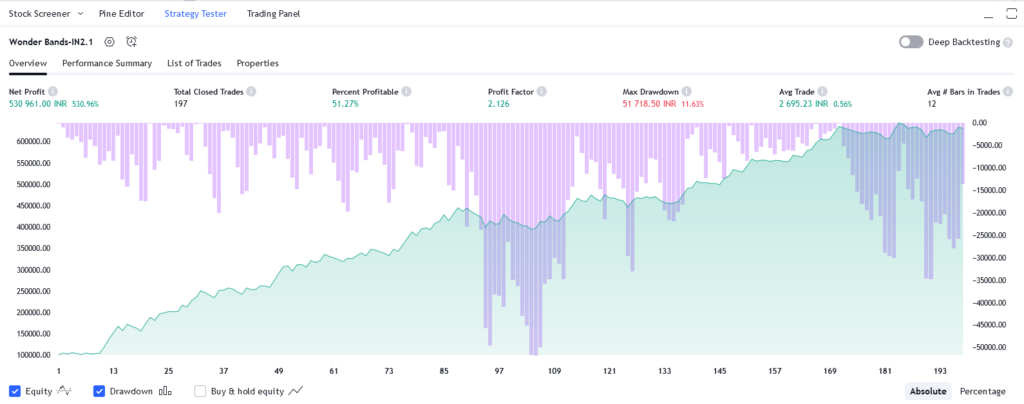Mastering the Art of Algorithmic Trading: A Guide to Build a Successful Algorithmic Trading System
Abir Jameel
- May 5, 2024

Have you ever wondered if it is even possible to build a successful algorithmic trading system that works all by itself without human intervention? Well, the answer is YES! It is certainly possible to build a successful trading system, but it involves a lot of effort and a clear understanding of financial market fundamentals. Let’s discuss all about it in this article with the results from one of my strategies as a case study.
If you are reading this article, you probably already know what algorithmic trading is and its advantages over manual trading methods. I would say the most important attribute is psychological control and emotional discipline. You can become overconfident, over-excited by looking at some candlestick pattern, or luckily if the market is behaving right as you have imagined it to go, but after a while, the market ditches you with a hefty loss.
Conversely, algorithmic trading systems are backtested on huge amounts of data, and quantitative and technical analysis makes it even more robust. Quantitative researchers include risk management systems to mitigate various types of market risk in algorithmic trading strategies.
Even with all other components such as risk management, backtesting, statistical analysis, and quantitative analysis the most important thing in developing an algorithmic trading system is choosing and developing a strategy.
Now what is a strategy, this is a real question to ask. There are mainly three types of strategies you can build momentum-based, trend-following, and mean reversion, this depends on the properties of the price series you are working on, you must analyze your price series whether it is momentum-centric, trend-following, or mean reversion.
From my experience, I can tell you that most of the indexes are mean-reversion in nature, whereas individual stocks are either momentum-centric or trend-following, or both. Now to find out whether your series is mean-reverting or momentum-centric or trend-following, there are specialized methods that will be out of scope for this article, but we will discuss them briefly.
Mean reversion means that the price variation corresponds to the disparity between the average price and the present price. We need to test the stationarity of the price series which can be done using tests such as ADF, Hurst Exponent, and Variance Ratio. Half-life of mean reversion measures how quickly a price series reverts to its mean, and is a good predictor of the profitability or Sharpe ratio of a mean-reverting trading strategy when applied to this price series.
The momentum analysis of a price series is two-fold time-series momentum and cross-sectional momentum. Time-series momentum refers to the positive correlation between a price series’s past and future returns. Cross-sectional momentum refers to the positive correlation of a price series’s past and future relative returns. For a price series that exhibits momentum-centric, we can use momentum-based technical indicators such as the Relative Strength Index (RSI), Moving Average Convergence Divergence (MACD), Average Directional Index (ADX), and Stochastic Oscillator.
Similarly, it goes with the trend-following strategies first you have to start with visual inspection and use technical indicators such as supertrend, ADX and moving averages.
Now I think is the right time to give you a pro tip and that is you can build a great strategy only by combining the standard technical indicators, I mean to say if you are going to use each of these indicators alone you will never be able to build a successful trading strategy. Think of all these standard technical indicators to be “Do, Re, Mi, Fa, Sol, La, Ti” of the trading world, like a musician you have to create a song out of these syllables, i.e. creating a trading strategy all these technical indicators in a right mix and then you will be able to see the real outcome.

Case Study:
I developed a strategy mixing Bollinger bands and Fibonacci levels and moving averages, and I called this strategy “WonderBands” In the figure above you can see the return over 4 year period, isn’t it amazing that’s what my goal was while writing this article to tell you that if you use a right mix of technical indicators you can also build a profitable algorithmic trading strategy.
About Author
Abir Jameel

Multiprocessing and Multithreading in Python
Recent Comments
Categories
Archives
- May 2024 (1)
- January 2024 (1)
- October 2023 (1)
- July 2022 (1)
- October 2021 (2)
Categories
- Advanced 1
- Beginner 2
- Intermediate 2
- Tech 2
